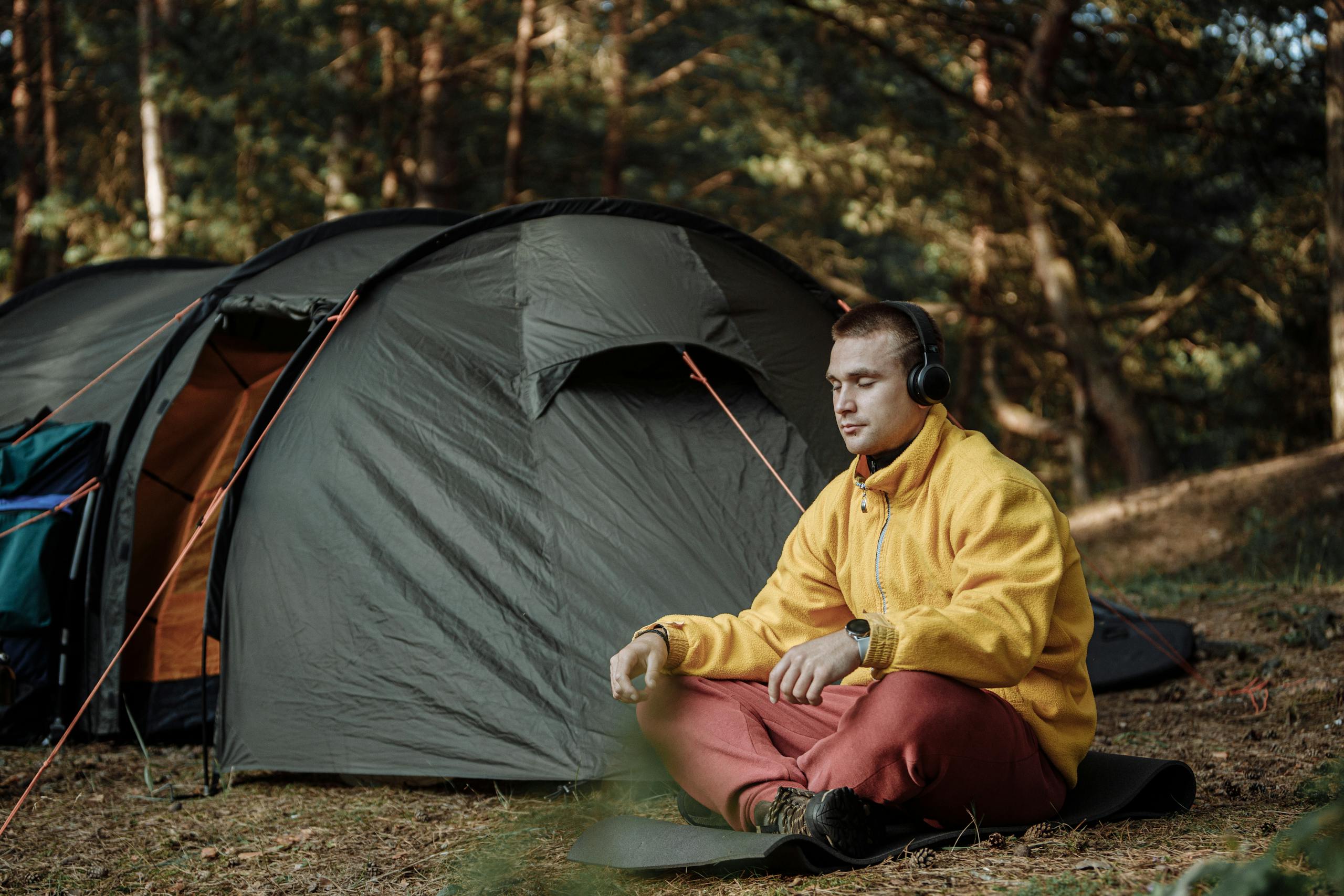Best Solo Tent for Backpacking
Finding the best backpacking tent for solo adventures can be challenging. You’re searching for something that won’t weigh you down yet stands strong against the elements to keep you comfortable and dry.
We understand this challenge, having faced it ourselves on treks along the Appalachian Trail and Pacific Crest Trail. We’ve discovered some reliable options through our adventures in various climates and conditions.
Our guide will present you with top ultralight tents perfect for individual explorers. We assessed them based on their simplicity of setup, their durability in wind and rain, and other factors.
Prepare to find your new travel partner here as we present our findings!
Key Factors to Consider in a Lightweight Tent for Solo Backpacking
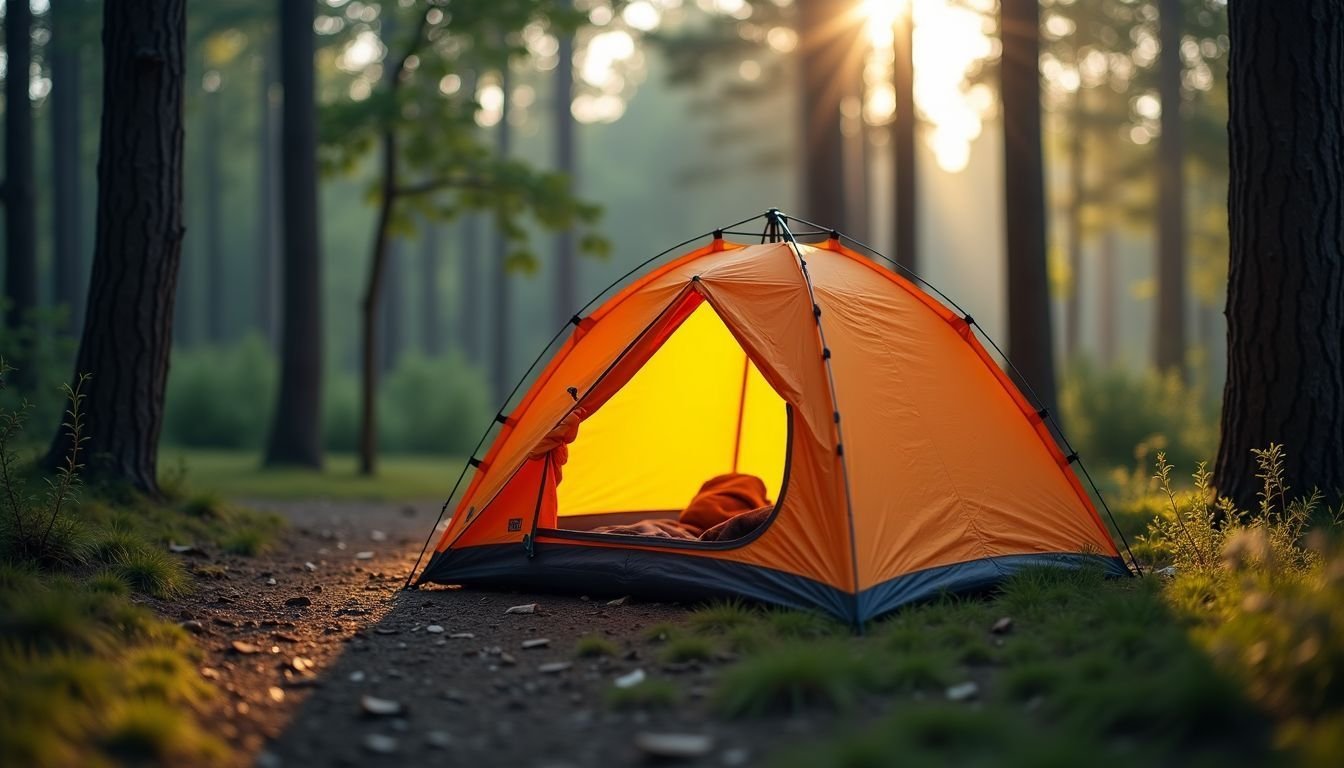
When choosing a lightweight tent for solo backpacking, consider the weight and packed size, durability, weather resistance, ease of setup, ventilation, and condensation management.
These aspects will help ensure your comfort and safety during your outdoor adventures.
Weight and packed size
We know that for ultralight backpackers, every ounce matters, especially when choosing a one person ultralight tent. That’s why we focus on tents that weigh under 48 oz. This includes all parts like the body, cover, poles, pegs, cords, and bags.
Light gear makes hiking easier and lets you go farther without getting tired.
Packed size is just as important as weight. A small tent takes up less space in your backpack, leaving room for other essentials. We look for tents that pack down small but still give you enough room to be comfortable at campsites.
Our favorite ultralight shelters are perfect for anyone who loves solo adventures in nature.
Durability and materials
A tent’s toughness comes down to two things: what it’s made of and how thick the tent fabric is. Dyneema Composite Fabric (DCF) tents are super strong but will make your wallet lighter too.
They’re worth it if you don’t like buying new tents often. The thickness of a tent’s fabric is measured in Denier (D). Higher D means tougher material that can take more hits from rocks, sticks, and rough ground. The higher the Denier, the stronger your home away from home. Next up, keeping dry and comfy no matter the weather is key for any solo backpacker…
Weather resistance
We know that staying dry and safe in different weather is key for solo backpackers. That’s why the right tent must handle rain, wind, and sometimes snow.
Tents with high-denier fabrics and silicone-coated flysheets are top choices.
They keep you dry without adding much weight to your pack. A single wall tent, while offering significant weight savings and ease of setup, may face condensation issues in challenging environments, which can affect its weather resistance.
Our picks, like the Zpacks Plex Solo Tent or the Hyperlite Mountain Gear Mid 1, use these tough materials. They provide a shield against heavy rain and strong winds while remaining ultralight for your adventures.
With these tents, we ensure you stay protected no matter where you set up camp.
Ease of setup
After talking about weather resistance, let’s move to setting up your tent. Setting up your shelter quickly is key, especially when the weather turns bad fast. Freestanding tents are great for this.
You can put them up fast and move them easily if you need to find a better spot.
For those of us who use trekking poles on our hikes, some ultralight backpacking tents use these poles as part of their structure. This means fewer parts to carry and a simpler setup process.
Just make sure your stakes are in the right. push them into the ground at an angle that’s against the wind or rain direction. This keeps your tent stable and snug wherever you decide to camp for the night.
Ventilation and condensation management
Once we’ve tackled the ease of setup, our next focus is on keeping the inside of our tents fresh and dry. Good airflow stops condensation from building up. This means we need mesh windows, doors, and a mesh inner tent in our tents.
They let air come in and out easily. A well-ventilated tent is a comfy tent. We also make sure to pick tents with vents at the top or sides that can stay open in rain or shine. This way, even when it’s wet outside, fresh air keeps moving through the tent. It’s all about finding that sweet spot where you’re shielded from bad weather but still catching every cool breeze.
Best Overall Lightweight Tent: Zpacks Plex Solo tent
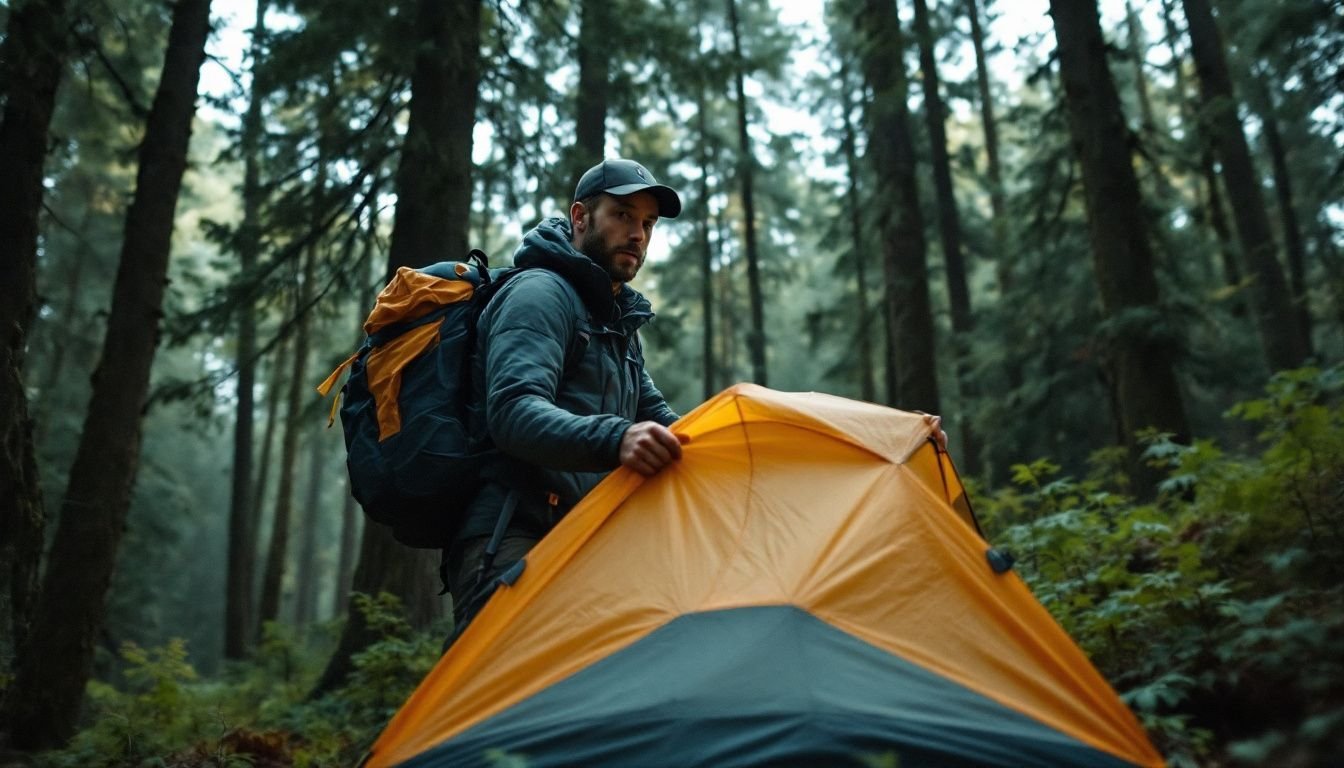
In considering the best backpacking tents for solo backpacking, the Zpacks Plex Solo Tent emerges as a top choice.
Its advanced design prioritizes weight reduction without compromising durability and weather resistance, making it ideal for thru-hikers looking for more than just an ultralight shelter.
Features
We love the Zpacks Plex Solo Tent for many reasons. It weighs only 13.95 oz, which makes it perfect for solo backpackers who watch their pack weight. You won’t need stakes since this tent uses a single trekking pole to set up.
It’s made of Dyneema Composite Fabric (DCF), known for its strength and waterproof features. This fabric keeps you dry and lasts a long time.
The tent reaches a peak height of 52 inches, giving plenty of room to sit up inside. Setting it up takes about five minutes, so you can spend more time enjoying nature and less on camp chores.
Its design focuses on simplicity and efficiency, ideal for those long hikes where every ounce matters. With its $599 price tag, it represents an investment in top-notch gear designed specifically to meet the needs of thru-hikers and backpackers seeking lightweight options without sacrificing quality or comfort.
Pros and cons
Exploring the great outdoors solo? You’ll need a tent that’s easy to carry, quick to set up, and reliable in any weather.
The Zpacks Plex Solo Tent does well in these areas. Here’s a closer examination of its advantages and potential drawbacks.
Advantages
- Lightweight at 14.6 ounces
- Durable Quality
- Good for Weather protection
Drawbacks
- Priced at $599
- Needs careful staking
With its impressive features, the Zpacks Plex Solo Tent is an excellent choice for solo hikers. Now, let’s look at the best-value lightweight tent for solo backpacking.
Our pick
Advantages
Drawbacks
Zpacks Plex Solo Tent The best tent option for 1 person
The Zpacks Plex Solo Tent is the perfect shelter for solo backpackers seeking minimal weight without sacrificing comfort. Durable, Easy to set, and Spacious.
Our pick
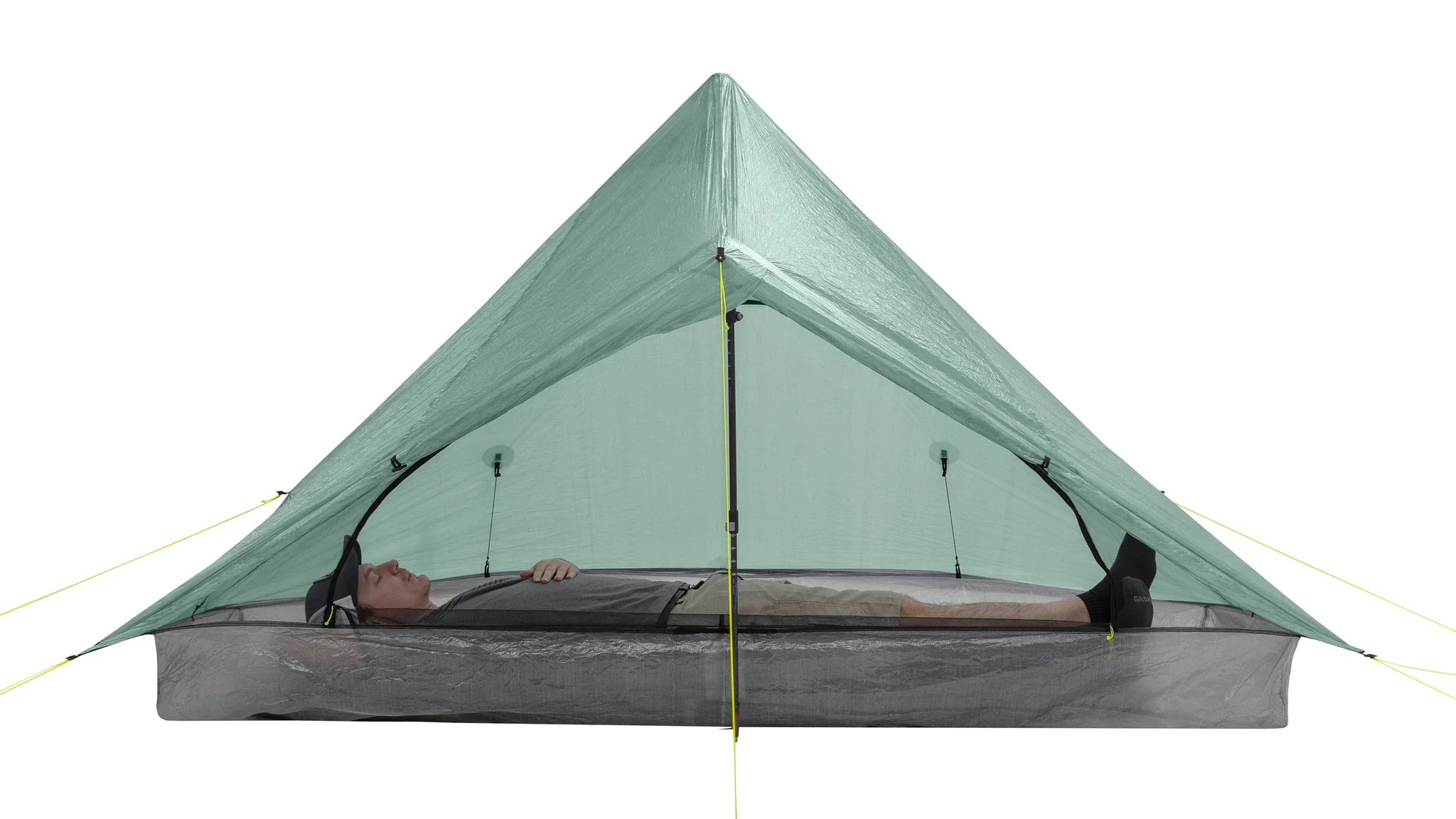
The Zpacks Plex Solo Tent is the perfect shelter for solo backpackers seeking minimal weight without sacrificing comfort. Durable, Easy Setup, and Spacious.
Best Value Lightweight Tent: Durston X-Mid 1P Tent
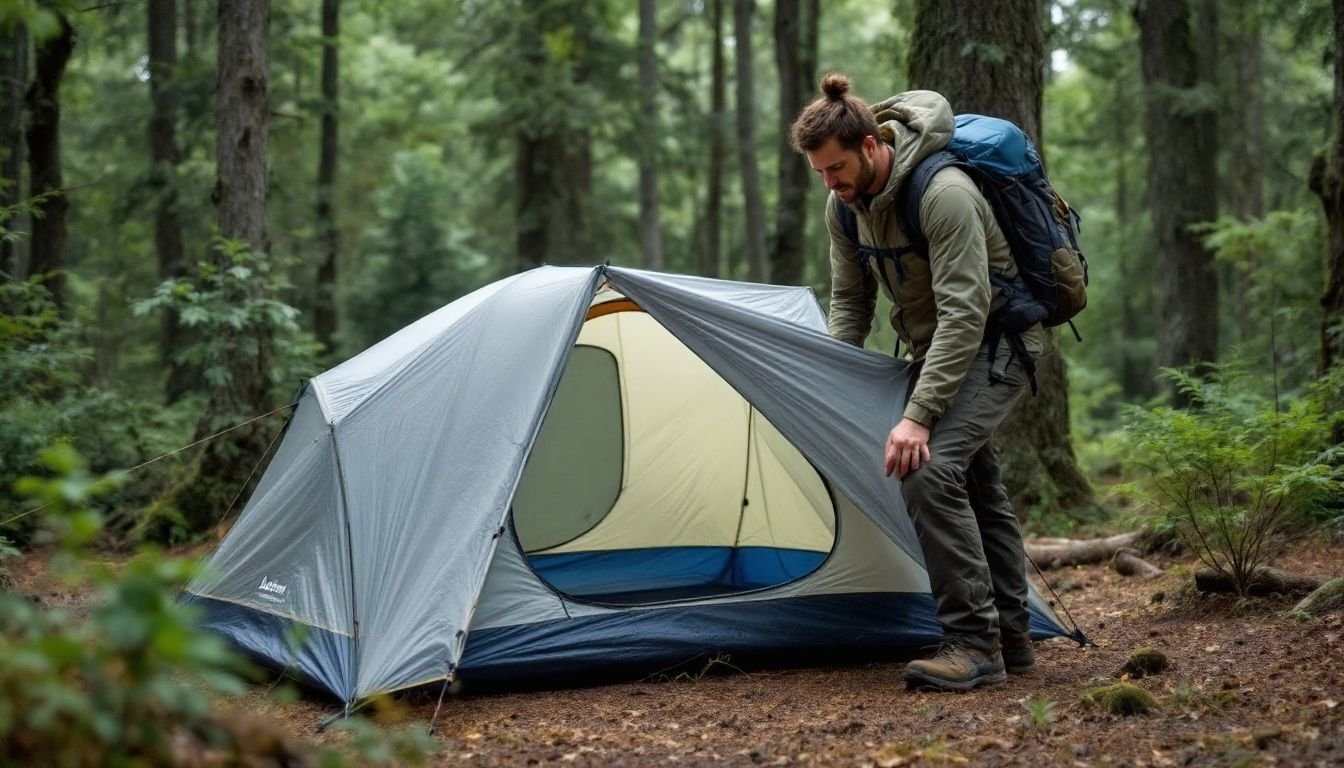
Durston X-Mid 1P Tent stands out as one of the best-value lightweight tents. Its design and functionality cater to solo backpackers’ needs.
Effectively, prioritizing weight without compromising on durability or comforta balance crucial for those seeking a reliable companion during their outdoor adventures.
Features
The Durston X-Mid 1P Tent shines as a top pick for backpackers who value both lightweight gear and space, making it an excellent one person tent. It weighs just 30.8 oz, making it easy to carry on long trails like the Continental Divide Trail.
This tent stands out with its double-wall design, crafted from durable 20D coated polyester. It measures 90 inches in length and 32 inches wide inside, offering plenty of room to stretch out after a day’s hike.
Setting up this shelter is straightforward requiring only six stakes. Its innovative magnetic door system lets you get in and out with ease, which is a real bonus in the middle of the night or when your hands are full.
Plus, with an MSRP of $240, it hits the sweet spot between quality and affordability for serious trekkers. Effortless to carry, set up, and step into the Durston X-Mid 1P proves itself as an indispensable partner on solo adventures.
Pros & Cons
We’ve examined the Durston X-Mid 1P Tent for those of us passionate about solo backpacking.
It’s a tent that receives a lot of attention from hikers, and we’re here to present our findings. Below is what you should understand about this shelter, presented in a direct table format:
Pros
- Lightweight design eases transportation
- Spacious headroom for increased comfort
- Waterproof construction keeps you dry
Cons
Setting it up requires some learning:
Pros
Cons
Our explorations into the wilderness often need a tent that is easy to carry. The Durston X-Mid 1P satisfies this requirement with its minimal weight.
It seems to say, “I’ll take care of you,” as it easily packs into our backpacks. It not only provides a dry place to sleep when the weather is wet but also prevents us from feeling squeezed, thanks to its ample headroom.
However, learning to set it up requires some commitment and practice. For us, it was akin to acquiring a new capability. But once we got it, it became straightforward.
Therefore, for those who revel in solo hiking and need a tent that is lightweight, spacious, and waterproof, the Durston X-Mid 1P Tent is the right choice.
Just allow some time to become proficient at setting it up, and you’re prepared for a comfortable night beneath the stars.
On Durston
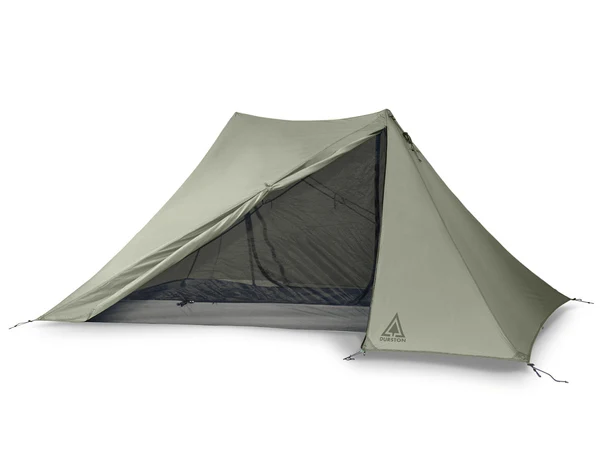
Durston X-Mid 1P: Ultralight, spacious, and stormproof, this tent redefines solo backpacking. Innovative design maximizes space and stability, while durable materials ensure reliable performance in any weather.
Durston X-Mid 1P Tent Stormworthy
Durston X-Mid 1P: Ultralight, spacious, and stormproof, this tent redefines solo backpacking. Innovative design maximizes space and stability, while durable materials ensure reliable performance in any weather.
Most Durable Lightweight Tent: Tarptent Aeon Li
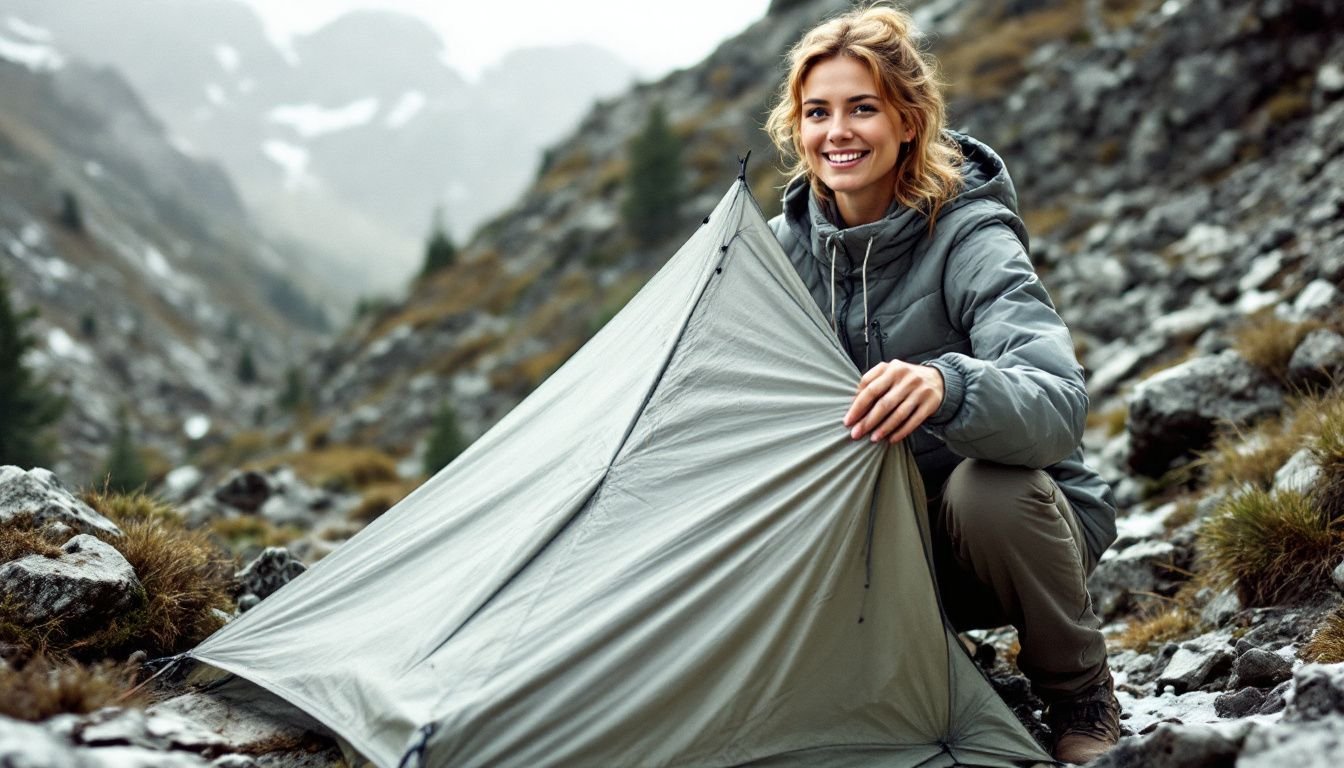
In terms of durability, the Tarptent Aeon Li is a resilient lightweight tent. Its Dyneema composite fabric ensures exceptional strength and longevity in various outdoor environments.
The Tarptent Aeon Li is tailored for adventurers looking for more than just shelter; it’s crafted to enhance your backpacking experience with its customized durability and weather resistance.
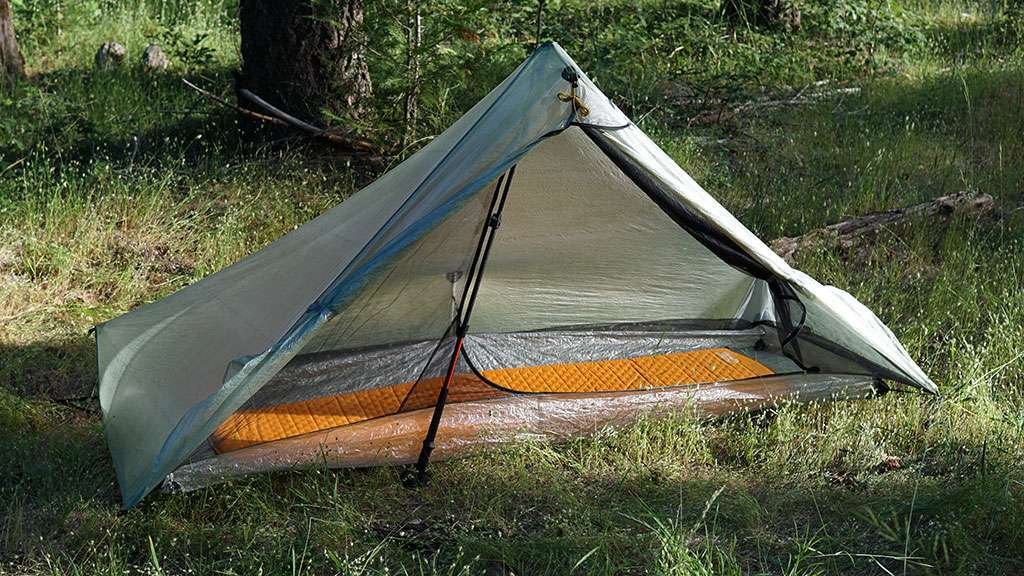
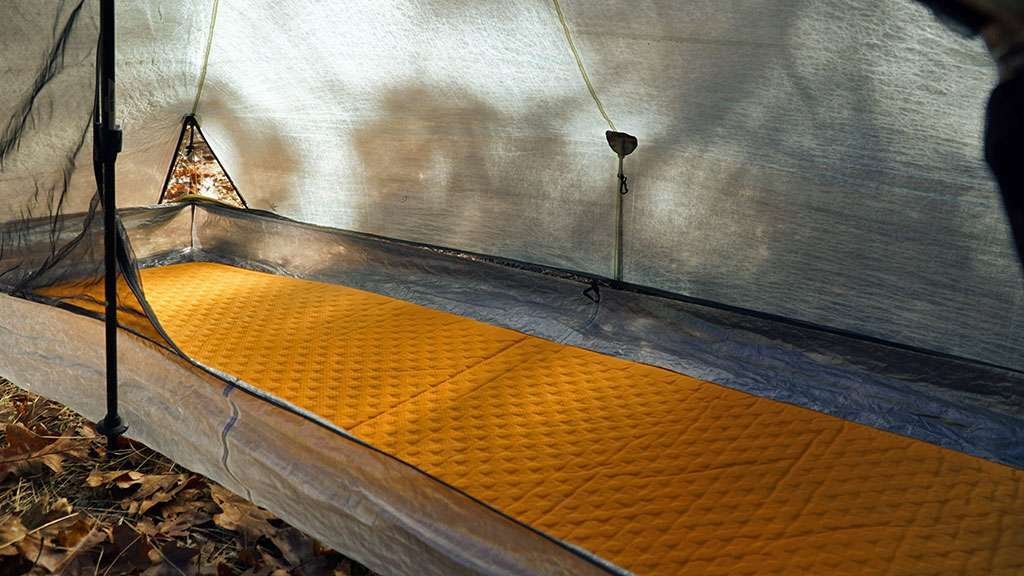
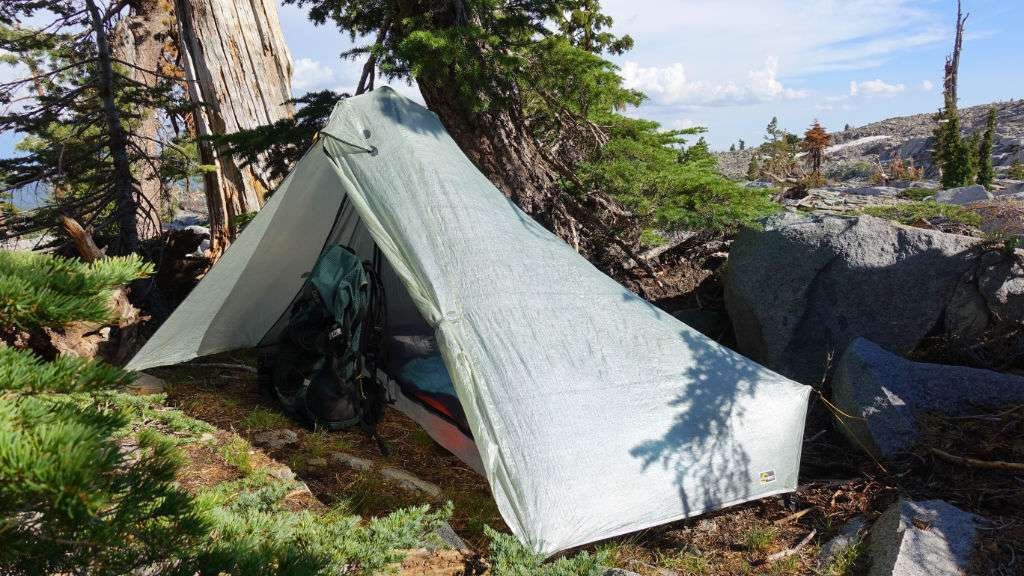
Features
The Aeon Li provides a combination of lightweight design and resilient durability for adventurous solo backpackers, utilizing sturdy tent poles for enhanced structural support.
Pros & Cons
We’re excited to share with you the pros and cons of the Tarptent Aeon Li. This tent is a top pick for many solo backpackers. It balances weight and durability beautifully.
Pros
Cons
We find these features make the Tarptent Aeon Li a valuable shelter for any solo adventurer. Its lightness means carrying it is a breeze.
You’ll hardly notice it in your pack. Durability ensures you stay dry and protected, no matter how tough the weather gets. And its setup simplicity means more time to relax at camp.
Sure, fitting your gear inside might require a bit of creativity, but that’s a small trade-off for the benefits it offers.
On Tarptent
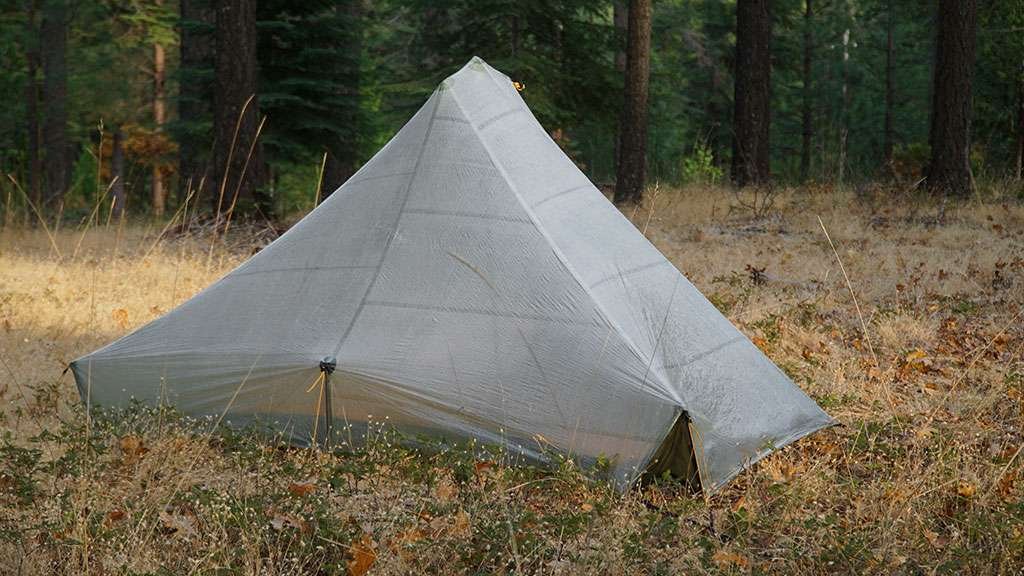
Tarptent Aeon Li: Ultralight, spacious, and weatherproof, this Dyneema tent is a backpacker’s dream. Innovative design maximizes livability and stability, while minimalist features prioritize weight savings without sacrificing performance.
Tarptent Aeon Li is Perfect for solo backpacking
Tarptent Aeon Li: Ultralight, spacious, and weatherproof, this Dyneema tent is a backpacker’s dream. The innovative design maximizes livability and stability, while minimalist features prioritize weight savings without sacrificing performance.
Best Lightweight Tent for Harsh Weather: Hyperlite Mountain Gear Mid 1
When facing harsh weather, you need a reliable shelter. The Hyperlite Mountain Gear Mid 1 is designed to withstand challenging conditions and provide a safe haven for solo backpackers going head-on with nature’s fury.
This tent offers an ideal balance of weight and strength, ensuring that you can tackle the most rugged terrains while staying protected from the elements.
Features
The Hyperlite Mountain Gear Mid 1 is a lightweight tent, weighing only 16.8 oz., making it easy to carry. It is constructed with waterproof Dyneema Composite Fabrics, ensuring durability against harsh weather conditions such as winds over 40 mph and heavy rain.
The interior space of 21 square feet provides ample room for solo backpackers, comfortably accommodating a sleeping bag and gear, while the peak height of 54 inches allows comfortable movement inside.
This tent offers reliability and protection without compromising on weight or pack size. Its sturdy construction ensures peace of mind during outdoor adventures.
With its impressive weight-to-space ratio, this tent strikes an optimal balance between minimizing pack weight and providing sufficient shelter for a comfortable backpacking experience.
Hyperlite Mountain Gear Mid 1
Moving from the unique features of the Hyperlite Mountain Gear Mid 1, we’re focusing on what makes this tent an excellent choice and also considering the potential drawbacks for some adventurers.
We aim to determine what gear will serve you best on the trail.
Pros
Cons
In our search for the best lightweight tent for solo backpackers, we’ve found that the Hyperlite Mountain Gear Mid 1 is excellent in many critical areas for backcountry adventures.
Its ultralight design and sturdy build make it a notable option. Its higher cost and the snug interior might not be for everyone.
This tent prioritizes weight savings and durability over spaciousness and luxury, targeting serious solo backpackers.
Best Lightweight Tent for Ease of Setup: Big Agnes Fly Creek HV UL 1
When considering easy setup, the Big Agnes Fly Creek HV UL 1 shines for its simplicity and speed. Crafted to improve your camping experience, this tent is customized for solo backpackers looking for more than just basic shelter.
Here are practical advantages of prioritizing ease of setup when choosing a lightweight tent:.
Features
The Big Agnes Fly Creek HV UL 1 is a lightweight tent that weighs just 1 pound 11 ounces, with packed dimensions of 4 x 18.5 inches and an MSRP of $550.
Its semi-freestanding structure features a three-pole design, offering roomy inner dimensions measuring at 86 x 38 inches, along with dual entrance options.
This backpacking gear is tailored to the needs of solo backpackers who prioritize weight savings without compromising useful features for their adventures in the world of outdoor exploration.
Crafted from top-tier materials and carefully engineered, this tent offers a sturdy shelter option for individuals looking to engage in fast-paced hikes or thru-hikes.
Aspiring for more than just basic protection against unfavorable weather conditions such as rain or strong winds and other challenges associated with backcountry camping experiences.
With its ease of setup and thoughtfully positioned interior space facilitating comfortable rest after long journeys on the trails, the Big Agnes Fly Creek HV UL 1 stands as an essential tool that avid hikers can rely on during their extensive hiking endeavors.
Using a taller trekking pole can enhance the internal height and spaciousness of the tent, making it even more comfortable for camping.
Pros & Cons
We’ve taken a close look at the Big Agnes Fly Creek HV UL 1. It stands out for many reasons, especially for those of us hitting the trails solo.
Here’s a detailed breakdown of its advantages and disadvantages, keeping every backpacker’s needs in mind.
Pros
- Lightweight, high-volume design increases interior space.
- Easy to set up, making it ideal for solo backpackers.
- Excellent weather resistance to keep you dry.
- Uses high-quality materials for durability.
- Good ventilation helps manage condensation.
Cons
- Floor material is thin, so a footprint is recommended.
- Limited headroom, single front door design can be inconvenient.
- Can feel cramped for taller individuals.
- The vestibule area is somewhat small.
- More expensive than some other lightweight options.
Pros
Cons
This tent balances weight and comfort beautifully. Yes, it has a few drawbacks, but when you’re miles from anywhere, the benefits shine.
The Big Agnes Fly Creek HV UL 1 will keep you cozy, dry, and ready to face another day of adventure.
Honorable Mentions
We’ve selected a few other impressive lightweight tents worth mentioning. These options offer unique features and are popular choices among solo backpackers in the know.
Nemo Hornet Elite OSMO 1P
The Nemo Hornet Elite OSMO 1P tent weighs a mere 1 lb. 7 oz., making it an ultralight backpacking option. With an MSRP of $550, it offers 21.8 square feet of livable space, balancing weight and interior space effectively.
This lightweight single-person tent is tailored to the needs of solo backpackers who value minimalism without sacrificing comfort.
Constructed using OSMO fabric, this tent provides durability while remaining lightweight. Its unique construction offers weather resistance and breathability, keeping you dry in wet conditions while managing condensation efficiently.
The Nemo Hornet Elite OSMO also features a streamlined design with ample ventilation for enhanced airflow and reduced moisture buildup inside the tent.
When setting up camp after a long day on the trails, this minimalist shelter excels due to its easy-to-pitch design and compact packed size.
Six Moon Designs Lunar Solo
The Six Moon Designs Lunar Solo is a lightweight tent perfect for solo backpacking, weighing just 19.4 oz and made from SilPoly material. As one of the top-rated one person tents, it offers significant weight savings for serious outdoor expeditions.
It’s known for its durability and roominess, with an easily accessible center pole that makes setup breeze during any camping trip-whether it’s on the Appalachian Trail or a fastpacking adventure.
This tent gets high marks for weather resistance and ensuring good ventilation to manage condensation effectively. With ample floor space, there’s enough room to store your gear inside while still having plenty of lounging space.
The design includes a higher peak height, which creates a comfortable living area and prevents feeling claustrophobic when spending extended time inside due to inclement weather….
Gossamer Gear The One
When it comes to lightweight tents, Gossamer Gear The One is a top contender. Weighing in at just 17.7 oz., it’s tailored for solo backpacking and offers a spacious bathtub floor measuring 84 inches long and 33 inches wide.
This tent requires the use of trekking poles for pitching, making it an efficient choice for minimalist adventurers seeking ultralight gear that doesn’t compromise on comfort or durability.
This tent ticks all our boxes lightweight, durable, and thoughtfully designed for solo backpackers. As we continue our exploration into the world of lightweight tents, let’s explore single-wall vs.
double-wall tents to further unveil the secrets of choosing the right shelter for your outdoor adventures.
Single-Wall vs. Double-Wall Tents: Which Is Better?
When considering single-wall tents, they are lighter due to their one-layer design. However, they can result in increased condensation inside. Opting for a two person tent can be advantageous for backpackers who prioritize livability and extra room for gear, especially when spending extended time at camp.
In contrast, double-wall tents offer improved moisture management with two layers – a breathable inner body and a waterproof rainfly.
Although they are heavier, they provide superior ventilation and storage options.
In general, the choice between single-wall and double-wall tents revolves around your priority weight or comfort.
Campers might take into account factors such as weather conditions, trip duration, and personal tolerance for condensation when making this decision.
- Freestanding vs. Non-Freestanding Tents: Key Differences.
Freestanding vs. Non-Freestanding Tents: Key Differences
Freestanding tents stand on their own without needing to be staked down. Two person tents are particularly popular among backpackers for their balance of weight and interior space, offering more comfort for two sleepers and gear storage. Non-freestanding tents must be staked for support. Generally, freestanding tents have simpler setup and more interior space compared to non-freestanding ones.
However, non-freestanding tents are lighter and more compact.
Choosing the Right Seasonality for Your Tent
When choosing your tent, it’s important to take into account the seasonal requirements that align with your outdoor excursions. Every seasonal tent provides distinct advantages customized to particular weather conditions and temperatures.
Grasping these differences will lead you to a tent ideally suited for your backpacking requirements.
Three-season tents
When starting a solo backpacking journey, it’s crucial to have the appropriate gear that meets your specific requirements – and selecting an appropriate three-season tent is no different.
Now, let’s transition to “Four-season tents.
Four-season tents
Four-season tents are made to endure harsh weather, such as snow and strong winds. They are constructed with rigid shapes and tough fabrics ideal for abrasive alpine settings.
These tents provide protection in extreme conditions, making them suitable for winter camping or mountaineering expeditions.
When choosing a four-season tent, it’s crucial to prioritize durability and weather resistance over lightweight design. It is important to consider the specific conditions you will encounter while selecting a four-season tent.
Tent Materials and Longevity
In the realm of selecting a lightweight tent for solo backpacking, understanding tent materials and their longevity is crucial. The type of fabric used in the construction can significantly impact a tent’s durability and how long it will last.
Exploring the intricacies of tent materials and acknowledging their customized properties for specific weather conditions, such as silnylon and polyester blends or Dyneema composite fabric, underscores the importance of choosing the right material for your adventures.
Dyneema composite fabric
Dyneema composite fabric represents an exceptional option for lightweight backpacking tents. It is renowned for its remarkable blend of strength and water resistance, making it an ideal choice for enduring harsh outdoor conditions.
The material is also celebrated for its minimal weight, thereby aiding in reducing the overall weight of the tent. This feature allows solo backpackers to conveniently carry a reliable shelter without unnecessary bulk adding to their load.
Moreover, Dyneema composite fabric has gained notoriety for its enduring performance and is frequently employed in top-tier gear owing to these outstanding attributes.
This advanced fabric adeptly addresses the crucial factors of weight, durability, and water resistance critical considerations when selecting lightweight backpacking gear.
Those who favor a minimalist approach to hiking will find it advantageous that Dyneema composite fabric provides these practical advantages at prices starting from $369.00.
Silnylon and polyester blends
Transitioning from Dyneema composite fabric, we now explore the world of silnylon and polyester blends. Silnylon is a lightweight, waterproof fabric made from ripstop nylon coated with silicone.
Conversely, silpoly offers advantages such as better pitch maintenance due to less stretch. These materials are commonly used in the construction of lightweight tents, ensuring durability and weather resistance for outdoor enthusiasts.
When considering a lightweight tent for solo backpacking, understanding these materials can be crucial in making an informed decision about your gear.
Silnylon and polyester blends have transformed the realm of ultralight camping equipment, providing backpackers with durable yet light options suitable for all sorts of exciting adventures.
Whether you’re thru-hiking along renowned trails or going on a weekend camping trip, having knowledge about these materials can unveil the secrets to selecting a tent that suits your needs perfectly.
Ventilation and Dealing With Condensation
When it’s chilly out, water vapor can condense on the cooler tent surfaces, resulting in condensation. The mesh windows and proper ventilation in lightweight tents are designed to prevent this.
Moreover, elevating the shelter improves airflow, effectively cutting condensation by half.
By enhancing airflow within your tent and opting for well-ventilated models such as the Zpacks Plex Solo Tent or Durston X-Mid 1P Tent, you’re directly addressing condensation-related concerns.
Interior Space and Livability
When considering the interior space and livability of a lightweight backpacking tent, we explore the aspects of floor space, peak height, and vestibules for storage. It is all about crafting a comfortable sanctuary during your outdoor adventures – a place where you can unwind after a long day on the trails and prepare for what lies ahead.
Floor space
The standard floor area for a backpacking tent is typically around 28 square feet. This size allows for comfortable sleeping and storage of essential gear within the tent. A larger floor space can offer more room, making it easier to move around inside the tent and manage belongings effectively.
When considering your tent’s floor space, keep in mind that larger vestibules also provide additional storage options outside of the living area. These extensions give you extra space for items like dirty shoes or wet gear, maintaining the cleanliness and organization of your sleeping quarters.
So always consider the size of both the main sleeping area as well as any vestibules when selecting a lightweight solo backpacking tent.
Peak height
Peak height is an essential factor to consider when choosing a lightweight tent. It affects the amount of usable living space inside the tent. For example, the Nemo Hornet Elite OSMO 1P offers a peak height of 39 inches, providing enough headroom for comfort and ease of movement while inside the tent.
When backpacking solo, it’s crucial to ensure that the peak height allows you to sit up comfortably and move around without feeling cramped. A taller peak height can significantly enhance your overall camping experience by creating a more livable and spacious environment within your shelter.
Vestibules and storage
When backpacking, vestibules are crucial for shelter from the elements. They also provide storage space for gear and equipment. Larger vestibules offer better protection during adverse weather conditions, ensuring comfort and safety on the trail.
In addition to providing extra room to wait out storms or store belongings safely, they keep the sleeping area free of dirt and moisture. Having ample storage space reduces clutter inside the tent, making it a more comfortable living environment while trekking through different terrains.
These features contribute significantly to our overall backpacking experience by enhancing convenience and minimizing exposure to harsh outdoor conditions.
Weight vs. Comfort: Striking the Right Balance
When choosing a lightweight tent for solo backpacking, it’s essential to find the right balance between weight and comfort. Ultralight tents, which weigh 2 pounds or less, are easier to carry during long treks.
Conversely, heavier tents, over 4.5 pounds, offer increased durability and comfort. Given this, we must carefully assess our priorities when choosing a tent that best meets our needs.
It’s important to note that ultralight tents often necessitate extra setup tools like trekking poles, which could contribute to the overall weight carried on the journey. Hence, striking a balance between reducing weight and ensuring sufficient comfort is crucial to having a fulfilling backpacking experience without compromising on safety or quality shelter.
By wisely achieving this equilibrium, we can fully optimize our backpacking adventure while experiencing the advantages of a suitable and effective shelter system tailored specifically to our individual requirements.
Pitching Tips for Lightweight Tents
Pitching lightweight tents requires attention to detail. Proper stake placement and the use of trekking poles are essential for a secure setup.
Using trekking poles
Using trekking poles makes it easier to set up lightweight tents, reducing strain on the arms and shoulders. The poles can be adjusted to fit the tent’s height requirements… when pitching in various terrains or conditions.
This method also provides stability in challenging weather and terrain.
In addition, hiking pole tents minimize the need to carry extra weight since you’re using equipment that serves a dual purpose. This approach aligns with our goal of optimizing gear for efficient backpacking without compromising functionality or comfort.
By utilizing trekking poles as part of our setup, hikers can enjoy a simpler, more streamlined experience while on the trails, allowing them to focus more fully on their adventure ahead.
Proper stake placement
After mastering the art of using trekking poles to set up your lightweight tent, let’s make sure we know how to properly place stakes. Stakes should be positioned perpendicular to the direction of force for optimum stability.
Moreover, placing larger rocks on top of the stakes can further enhance their grip and fortify your tent against gusts and rough weather conditions.
Do You Need a Footprint for Your Tent?
Using a footprint for your tent can protect the base from abrasions and provide added waterproofing. However, it also adds extra weight, typically between 6 to 12 ounces. Consider the conditions you’ll be camping in and how much protection your tent’s base will need before deciding if a footprint is necessary for your setup.
In some cases, using a tarp or groundsheet made from durable and lightweight materials could provide similar protection while minimizing the added weight. Evaluate the terrain you’ll be camping on and make an informed decision based on your specific needs and preferences.
Budget-Friendly Lightweight Tents
Looking for a lightweight tent that won’t break the bank? We’ve got you covered with some budget-friendly options. Let’s check out some affordable tents that still offer great features and performance!
REI Co-op Quarter Dome SL 1
The REI Co-op Quarter Dome SL 1 is a well-regarded ultralight backpacking tent, weighing 2 pounds 6 ounces and offering a total floor space of 18.9 square feet. Priced at $329, it’s known for its durability and materials, making it suitable for solo backpacking trips.
The tent provides good weather resistance and ventilation while effectively managing condensation.
Pitching the REI Co-op Quarter Dome SL 1 is straightforward, offering ease of setup during your camping adventures. Its packed size and weight make it a convenient choice for backpackers seeking practical benefits without compromising comfort or quality in their ultralight tents.
Naturehike Cloud-Up 1
Looking at the Naturehike Cloud-Up 1, it’s a budget-friendly option costing around CAD 175 and $179 on Amazon.com. The packed dimensions are approximately 16×5 inches, making it compact for backpacking.
It weighs between 3 and 4 pounds, which is manageable for solo hikers aiming to keep their load light. This tent offers practical benefits of being lightweight and cost-effective without compromising essential features needed for solo backpacking trips.
Moving on to the next part – “Comparing Packed Sizes and Trail Weights.
Comparing Packed Sizes and Trail Weights
We understand how crucial it is to find the perfect balance between the weight you carry and the comfort you desire when backpacking solo. That’s why we’ve put together this comparison of packed sizes and trail weights for some of the top lightweight tents on the market. The packed weight includes everything: the tent body, rain fly, poles, and stakes, while the trail weight focuses on just the tent body, rain fly, and poles. Typically, you’ll see a 5 to 8 ounces difference between the two.
Here’s a simple table to help you see how these tents compare:
| Tent Name | Packed Weight | Trail Weight | Packed Size | Buy Now |
|---|---|---|---|---|
| Zpacks Plex Solo Tent | 15.5 oz | 14.9 oz | 5″ x 8″ | Check Price |
| Durston X-Mid 1P | 28 oz | 27 oz | 6″ x 10″ | Check Price |
| Tarptent Aeon Li | 17 oz | 16 oz | 4.5″ x 15.5″ | Check Price |
| Hyperlite Mountain Gear Mid 1 | 19.4 oz | 18.5 oz | 6.5″ x 8.5″ | Check Price |
| Big Agnes Fly Creek HV UL 1 | 33 oz | 32 oz | 4″ x 19″ | Check Price |
We hope this comparison provides clarity on what each tent offers in terms of weight and size. Choosing the right one can significantly affect your backpacking experience.
Our goal is to assist you in finding that perfect balance so you can thoroughly enjoy your adventures.
How We Tested These Tents
We tested these tents in various environments such as mountains, forests, and deserts using specific evaluation criteria. Intrigued?
Testing environments
We tested the lightweight tents in diverse environments, including the United States, Canada, Mexico, Turkey, and India.
These locations included challenging trails such as the Appalachian Trail, Pacific Crest Trail, and John Muir Trail to ensure that each tent could withstand different terrains and weather conditions.
This allowed us to provide comprehensive insights on how these tents perform in real-world scenarios and help you make an informed decision based on actual experiences.
In addition to evaluating these tents in various countries, we also factored in different seasons during our testing process.
The goal was to ensure that our reviews cover a wide range of environmental conditions so that you can confidently choose a lightweight tent best suited for your backpacking adventures.
Evaluation criteria
During our testing, we used specific criteria to evaluate the lightweight tents mentioned in this article.
These criteria are important for assessing the tents’ performance and suitability for solo backpacking. The evaluation criteria we followed are as follows:
- Weight: We assessed the weight of each tent, considering its impact on portability during solo backpacking.
- Packed Size: We carefully measured and compared the packed size of each tent, acknowledging the space limitations faced by solo backpackers.
- Durability: We examined the materials used and construction quality to determine durability, crucial for withstanding rugged outdoor conditions.
- Weather Resistance: We tested each tent’s ability to handle different weather conditions such as rain, wind, and extreme temperatures.
- Ease of Setup: We evaluated how quickly and easily each tent could be set up, recognizing the importance of efficiency during solo trips.
- Ventilation and Condensation Management: We observed how well each tent managed ventilation and condensation buildup to ensure comfort during use.
These criteria formed the basis of our thorough assessment to provide valuable insights into choosing a lightweight tent for solo backpacking.
Frequently Asked Questions About Lightweight Tents
What’s the lifespan of lightweight tents? Can trekking pole tents endure strong winds? Do ultra-lightweight tents handle humidity well? For answers, stay tuned and learn more as you read through.
How long do lightweight tents last?
Lightweight tents’ lifespan varies based on usage and material quality. Tarptent can last about 1 to 1.5 years with regular use, but the durability of other lightweight tents depends on factors such as weather conditions and maintenance.
Regularly inspecting the tent for wear and tear, using a footprint or groundsheet to protect the bottom, avoiding prolonged exposure to UV rays, and properly storing the tent when not in use can help extend its longevity.
It’s important to consider these factors when evaluating how long a lightweight tent will last: frequency of use, environmental elements encountered during camping trips, proper care and maintenance routines followed by users…
Are trekking pole tents worth it?
Trekking pole tents are valuable because of their lightweight design, which alleviates the burden on your back during hikes. When pitched correctly, they offer similar comfort and protection as conventional tents, but with less weight and bulk.
This is particularly crucial for those embarking on long-distance hikes, aiming to minimize pack weight while not compromising shelter quality. Not to mention, trekking poles can serve a dual purpose by aiding in tent setup, making them an indispensable multitool in the wilderness.
When determining the suitability of a trekking pole tent for your needs, take into account considerations such as weight reduction, pack volume, and overall comfort during your outdoor excursions.
Next heading: “Selecting the Appropriate Tent Seasonality”
Can lightweight tents handle strong winds?
Lightweight tents can withstand strong winds, depending on their design and materials. Some manufacturers known for crafting sturdy shelters include Hilleberg, TrekkerTent, and Tarptent.
It’s important to consider the tent’s construction and fabric when evaluating its wind resistance. Look for features like low profiles, aerodynamic shapes, strong poles, and durable fabrics such as Dyneema composite fabric or silnylon blends.
Proper pitching techniques and strategic placement in natural windbreaks can also enhance a lightweight tent’s ability to handle windy conditions effectively.
When setting up your tent in windy environments:
– Seek natural barriers like trees or rock formations to provide some protection.
– Position the tent with the narrow end facing into the wind.
– Use extra guy lines and stakes for added stability.
Understanding how different lightweight tents are engineered to deal with strong winds will help you choose the right one for your backpacking adventures.
Conclusion
After thoroughly assessing various lightweight tents for solo backpacking, we can confidently endorse the ZPacks Duplex Flex Upgrade as our top choice. This tent excels in weight, durability, and weather resistance.
Furthermore, its ease of setup and ventilation make it an ideal companion for your backpacking adventures.
When it comes to value without compromising quality, the Tarptent StratoSpire Ultra stands out. You can depend on its durability and performance while enjoying a reasonable price point.
In conclusion, whether venturing into the wilderness or embarking on a thru-hike, finding the right lightweight tent is crucial. We believe these recommendations will assist you in making an informed decision as you gear up for your next outdoor escapade.
Types of Tents
When it comes to backpacking tents, there are several types to consider, each with its own unique characteristics and benefits. Here are some of the most common types of tents:
- Freestanding Tents: These tents can be set up without the need for stakes, making them ideal for rocky or hard ground. They are often more expensive than other types of tents but offer greater versatility. Freestanding tents are perfect for those who value ease of setup and the ability to move the tent around without dismantling it.
- Semi-Freestanding Tents: These tents require stakes to be set up but can still be pitched on rocky or hard ground. They offer a good balance between weight, cost, and ease of setup. Semi freestanding tents are a great choice for backpackers who want a lightweight option that doesn’t compromise on stability and interior space.
- Non-Freestanding Tents: These tents require stakes to be set up and are often lighter and more compact than freestanding tents. They are ideal for backpackers who want to save weight and space. Non-freestanding tents are perfect for those who prioritize minimalism and are comfortable with a bit more effort during setup.
- Single-Wall Tents: These tents have a single layer of fabric that provides both waterproofing and insulation. They are often lighter and more compact than double-wall tents but can be more prone to condensation. Single-wall tents are suitable for those who need an ultralight tent and are willing to manage condensation through proper ventilation.
- Double-Wall Tents: These tents have two layers of fabric, with a waterproof outer layer and a breathable inner layer. They offer better ventilation and condensation management than single-wall tents but are often heavier and more expensive. Double-wall tents are ideal for those who want a comfortable and dry interior space, even in humid conditions.
Best Semi-freestanding Tents
Semi-freestanding tents offer a great balance between weight, cost, and ease of setup. Here are some of the best semi-freestanding tents on the market:
- Big Agnes Tiger Wall UL2 Solution Dye: This tent is a great option for backpackers who want a lightweight and compact semi-freestanding tent. It has a spacious interior and excellent ventilation, making it perfect for long hikes. The Tiger Wall UL2 Solution Dye is known for its durability and eco-friendly dyeing process, which reduces water and energy consumption.
- REI Half Dome SL 2+: This tent is a popular choice among backpackers, offering a great balance between weight, cost, and ease of setup. It has a spacious interior and excellent ventilation, making it comfortable for extended trips. The Half Dome SL 2+ is designed with a focus on livability, featuring large doors and ample headroom.
- MSR Freelite 2: This tent is a great option for backpackers who want a lightweight and compact semi-freestanding tent. It has a spacious interior and excellent ventilation, ensuring a comfortable night’s sleep. The Freelite 2 is known for its quick setup and reliable performance in various weather conditions, making it a dependable choice for solo adventurers.
Final Recommendations
When choosing a backpacking tent, there are several factors to consider, including weight, cost, ease of setup, and interior space. Here are some final recommendations to help you make the right choice:
- Best Overall Tent: Big Agnes Copper Spur HV UL2 – This tent offers a perfect balance of weight, durability, and interior space, making it an excellent choice for most backpackers.
- Best Ultralight Tent: Zpacks Duplex Classic – For those who prioritize weight savings above all, this ultralight tent provides ample space and weather protection without adding unnecessary ounces.
- Best Budget Tent: REI Trailmade 2 – This tent offers great value for money, providing reliable performance and comfort at an affordable price.
- Best Semi-Freestanding Tent: Big Agnes Tiger Wall UL2 Solution Dye – Combining lightweight design with a spacious interior, this semi-freestanding tent is perfect for those who want the best of both worlds.
- Best Double-Wall Tent: NEMO Hornet OSMO 3 – This tent offers excellent ventilation and condensation management, making it ideal for humid conditions and longer trips.
Ultimately, the best tent for you will depend on your specific needs and preferences. Be sure to consider factors such as weight, cost, ease of setup, and interior space when making your decision. Happy backpacking!

